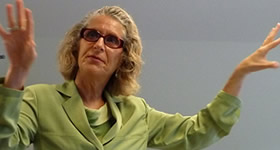Leadership is one of those tricky words. Actually, lots of words can be tricky. I use it and mean one thing. You hear it and interpret it in your own way. That’s why it’s important for organizations – and their people – to explore meanings, create shared understanding and meaning.
I was reading some of my old blogs – to refresh my memory, to refresh my learning. Back in 2009, I posted this blog about leadership…a newsletter from CLA, Cambridge Leadership Associates: Leading Adaptively, Winter 2009. Suggested to me by colleague and friend, Mary-Kim Arnold.
In the newsletter, author Marty Linsky gives some great tips to President Obama, as well as the rest of us. Things like:
1. Build in time for reflection. Marty calls this “getting on the balcony.” Look back and look ahead. Browse through books and magazines or stare out the window and reflect. Time for reflection can help maintain focus, anticipate challenges and opportunities, separate the important from the immediate, and all that kind of stuff.
2. Be wary of technical expertise. Sometimes when we are experts, we are not as able to question or be skeptical. It’s good to engage smart non-experts for their perspectives.
3. Govern experimentally. Experiment. Try new things. Try more new things. Learn from the past. Adapt for the future. Don’t get mired in same old same old.
In the same newsletter, Marty talks about institutional reflection and learning. He identifies three critical capacities that distinguish business as usual from strategic growth.
— Observation: Getting on the balcony, observing, collecting data
— Interpretation: Making sense of what you’re seeing and developing multiple hypotheses
— Intervention: Taking action based on your observation and interpretation
And finally, the Winter 2009 CLA newsletter talks about the importance of transparency and what it means to you and your organization and its stakeholders.
Has your organization ever talked about transparency? What’s your organization’s philosophy about transparency? To whom are you transparent – and about what? For example, what do you share with donors and volunteers? How transparent are you with staff? On the continuum of transparency, where is your organization? Where is your leadership? Not too transparent? Mostly in the middle? Or lots of transparency? I think good leadership and the most effective organizations err on the “lots of transparency” end of the continuum.

